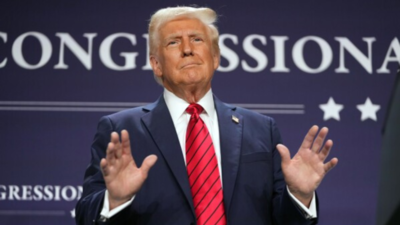- News
- World News
- US News
- Donald Trump's 'liberation day': What are reciprocal tariffs, and who pays them?
Trending
Donald Trump's 'liberation day': What are reciprocal tariffs, and who pays them?
President Trump has announced new tariffs targeting imports such as automobiles, steel, and pharmaceuticals, claiming they will benefit domestic manufacturing. Economists warn these tariffs could harm the US economy and increase consumer costs. Reciprocal tariffs, intended to protect local industries, might provoke international retaliation and political fallout.
US President Donald Trump is set to announce sweeping new "Liberation Day" tariffs on Thursday, a move he claims will boost domestic manufacturing and punish unfair trade practices.However, economists warn that the measures could damage the US economy, strain global alliances, and lead to higherconsumer costs."April 2, 2025, will go down as one of the most important days in modern American history," White House press secretary Karoline Leavitt said on Tuesday, adding that the tariffs would take effect immediately. The new levies target a wide range of imports, including automobiles, steel, aluminium, pharmaceuticals, and computer chips. Trump has also imposed tariffs on nations importing oil from Venezuela and hinted at broader future measures.Donald Trump's tariff announcement - live updatesDespite concerns over economic downturns and declining consumer sentiment, the administration remains confident. Trade adviser Peter Navarro suggested the tariffs could generate $600 billion annually—the largest tax increase since World War II. Treasury Secretary Scott Bessent said the tariffs might be negotiable, but the White House has yet to confirm details.
What are reciprocal tariffs , and who pays them?
Economic and political fallout

About the Author
TOI World DeskEnd of Article
Follow Us On Social Media










